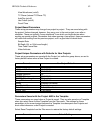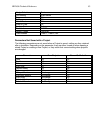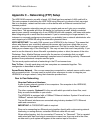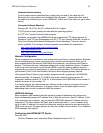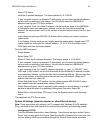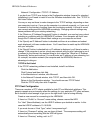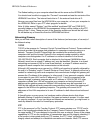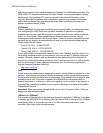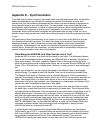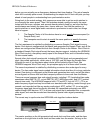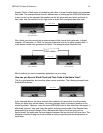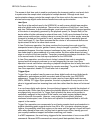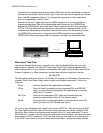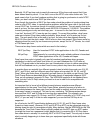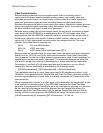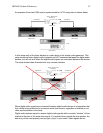HD24/96 Technical Reference 90
Appendix D – Synchronization
If you had only one piece of gear in your studio which recorded and played audio, life would be
dandy and chances are you wouldn’t be reading this section. But because you are, we’ll
assume that your life has been complicated by the need to get several pieces of equipment to
record and play back in sync with each other. To many people, even some of the big name
professionals, synchronization is a black art where trial and error rather than disciplined practice
often dictates how equipment is synchronized. Additionally, up until very recently good
information about synchronization principles and techniques was not easy to find, so it is no
wonder why so many people have a hard time making two pieces of audio equipment play back
in sync.
The good news is that synchronization is not a black art, and in fact is not difficult at all once
you understand the basic principles. So rather than giving you a myriad of “plug-and-play”
examples showing you how to mindlessly connect gear together under every conceivable
circumstance, the examples in this section are intended to illustrate how synchronization
actually works. Armed with this knowledge, you should be able to successfully configure any
system for synchronization under almost any situation.
What Makes the HDR24/96 (and Other Devices Like it) Tick?
Inside the HDR is a clock, very much like the watch on your wrist. The difference between
them is that the wristwatch ticks in seconds, the HDR24/96 ticks in samples, thousands of
times every second. This clock, called the Sample Clock, is the engine under the hood
which runs everything inside a digital audio device, be it a recorder like the HDR24/96, a CD
Player, A/D or D/A converter, or digital mixer. Without it, nothing comes in and nothing gets
out.
Unlike your wristwatch, you can change the speed of the Sample Clock to accomplish
different things. The speed at which the Sample Clock runs at is called the Sample Rate.
The Sample Clock inside a CD player runs at a Sample Rate of 44,100 Hz (samples/per
second). Some people in the audio industry like to run at 96,000 Hz because it sounds a bit
better. The sample clock of a digital audio device is like a servo control mechanism that
determines how fast a tape transport runs. Speeding up or slowing down the Sample Clock
causes the audio to playback to speed up or slow down.
As everyone knows, if you put any two clocks next to each other and start them at exactly
the same time, a week later they will not read exactly the same time. This is because there
are slight tolerance differences in the mechanisms of each clock which cause them to run at
slightly different rates. The same is true of Sample Clocks. If you put two HDR24/96s (or
any other two digital audio devices) next to each other, set them both to run at 48 kHz, and
put them into play at exactly the same instant, then over time they won’t display the same
time. In a digital recorder like the HDR24/96, the time that you see, whether displayed as
SMPTE, Bars|Beats|Ticks, or Hours|Min|Sec|Millisec, is really just the Sample Clock time
converted to different scales, like converting pounds to kilograms or having a watch
with1000 divisions to a minute rather than 60.
In typical digital audio equipment the Sample Rate difference between any two Sample
Clocks can by up to 0.01%. In practical terms this means that the two Sample Clocks may
drift by up to 360 ms per hour, or 6 ms per minute. Since flamming can be heard between
two percussive sounds with as little as a few milliseconds of delay, if you start two
HDR24/96s at exactly the same instant you may hear drift in less than one minute, well



